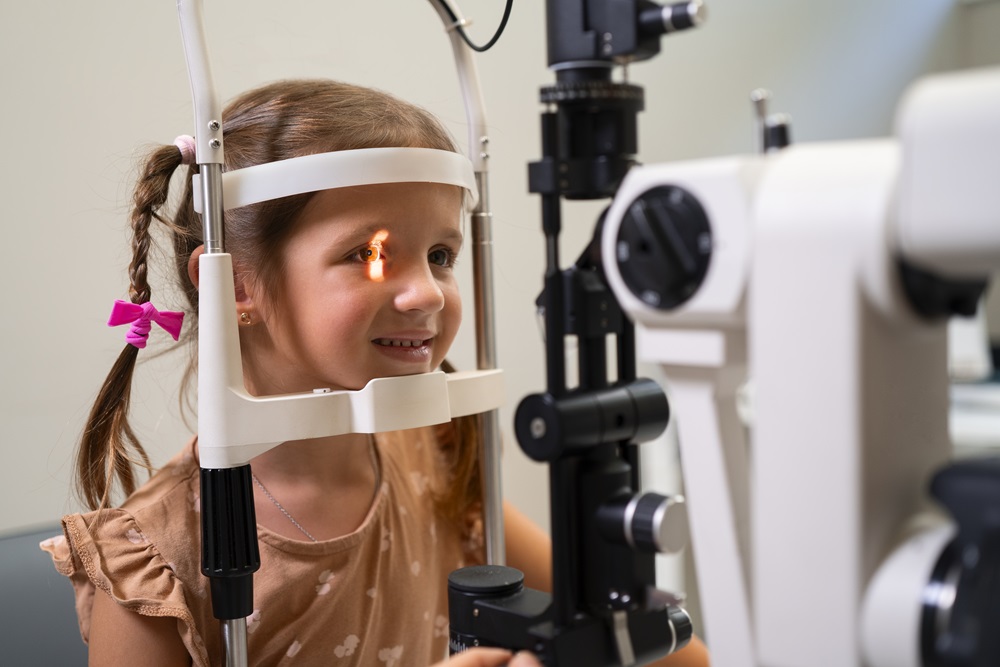Occurs at birth or within the first few years of life.
Results from developmental issues in the eye’s drainage system.
Arises due to other eye conditions, injuries, or systemic illnesses. Examples:
Uveitis (inflammation inside the eye),
Genetic syndromes (e.g., Sturge-Weber, Marfan syndrome).
Develops during late childhood or adolescence.
Often linked to familial inheritance.
Enlarged eyes (Buphthalmos): The eyeball appears abnormally large due to increased intraocular pressure (IOP).
Photophobia (Light Sensitivity): Discomfort in bright light.
Excessive tearing: Watery eyes without apparent cause.
Cloudy cornea: The normally clear cornea appears hazy or opaque.
Persistent redness: Irritation and visible redness in the eyes.
Vision loss: Progresses from mild blurring to severe impairment in untreated cases.
Genetic mutations: Family history significantly increases the likelihood.
Developmental defects: Improper formation of the eye’s drainage pathways.
Eye trauma: Physical injury or surgical complications.
Associated eye diseases: Conditions like cataracts or uveitis.
Systemic conditions: Disorders such as Axenfeld-Rieger syndrome.
Intraocular pressure (IOP) measurement: Detects elevated eye pressure.
Corneal diameter assessment: Evaluates for signs of abnormal enlargement.
Optic nerve evaluation: Checks for damage indicative of glaucoma.
Vision tests: Measures visual acuity and field of vision.
Eye drops or oral drugs to reduce IOP.
Common medications include beta-blockers, prostaglandin analogs, and carbonic anhydrase inhibitors.
Goniotomy or Trabeculotomy: Opens blocked drainage pathways.
Trabeculectomy: Creates a new drainage route for fluid.
Glaucoma drainage devices: Implantation to regulate fluid buildup.
Improves fluid drainage and reduces pressure in certain cases.
Regular eye exams: Ensure timely diagnosis, especially with a family history of glaucoma.
Monitor symptoms: Watch for enlarged eyes, light sensitivity, or excessive tearing.
Follow treatment plans: Adhere to medication schedules and attend follow-ups.
Stay informed: Learn about the condition to provide better support to your child.
Turkey is recognized for its advanced healthcare facilities, offering high-quality glaucoma treatments at affordable costs.
Experienced Specialists: Expert pediatric ophthalmologists with extensive experience in glaucoma management.
Modern Technology: State-of-the-art diagnostic and surgical tools.
Affordable Treatment: Significant cost savings compared to Western countries.
Comprehensive Care: Holistic services from initial diagnosis to post-treatment follow-ups.
Medications: Tailored eye drop and oral therapy plans.
Surgical Procedures: Goniotomy, trabeculotomy, and advanced drainage implants.
Laser Treatments: Innovative techniques to enhance fluid outflow.
Choose a hospital or clinic with a strong reputation in pediatric glaucoma.
Consult specialists to create a customized treatment plan.
Plan for at least a one- to two-week stay for surgical recovery and follow-up.
Check insurance coverage or discuss payment plans with the hospital.
Child glaucoma is a serious but manageable condition when diagnosed early. Whether seeking care locally or in Turkey, consult a qualified ophthalmologist for the best outcomes. Early intervention and comprehensive treatment are key to preserving vision and ensuring a better quality of life for affected children.
